Karnataka has a rich heritage, distinct culture, and ethnic art styles. From its delicious cuisine to its unique art forms, joyous festival celebrations, and graceful dressing sense, Karnataka is undoubtedly a display of cultural extravaganza. Different religions, traditions, and ethnicities have influenced Karnataka’s culture and tradition.
Karnataka’s culture and tradition: Artforms Music
Karnataka is famous for classical music, and Hindustani and Carnatic music thrive there. Hindustani flourishes in North Karnataka and Carnatic in South Karnataka.
Carnatic music
- With the emergence of Vaishnavism and the Haridasa movement, Karnataka’s culture and tradition assumed a new dimension, particularly in music. The state came up with great composers like Purandaradasa and other well known ones, whose music flowed with devotion and had a touch of culture.
- Apart from Purandaradasa, Kanakadasa, Vyasatirtha, Jayatirtha, Sripadaraya, Vadirajatirtha, Vijaya Dasa, Gopaladasa, Jagannathadasa, etc., contributed largely to Carnatic music.
Hindustani music
- Gangubai Hangal, Kumar Gandharva, Puttaraj Gawai, Pt. Mallikarjun Mansur, Sawai Gandharva, Pt. Bhimsen Joshi and Basavaraj Rajguru were noteworthy contributors to the state’s Hindustani music.
- Apart from classical music, folk music has also carved a niche in Karnataka. Karadi Majalu is a famous folk music from North Karnataka.
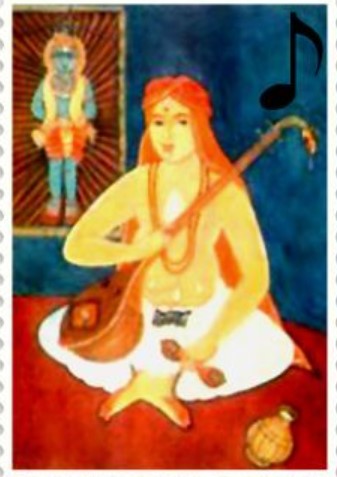
Dance
Unique dance forms native to the state also form a significant part of Karnataka’s culture and tradition.
- Yakshagana: Yakshagana from coastal Karnataka is a unique dance drama combining folk and classical traditions.
- Pilivesha: Pilivesha is yet another dance form originating from coastal Karnataka. Dancers paint their bodies with the image of a tiger and perform in streets and temples. This dance form is mainly performed during Navratri to appease Goddess Durga, whose vehicle is also the tiger.
- Kunitha: Dance forms associated with rituals in Karnataka are called Kunitha and are performed in various parts of the state. Some of the Kunitha dance forms are Dollu Kunitha, Somana Kunitha, Suggi Kunitha, Jaggahalige Kunitha, and Goravara Kunitha.
- Other dance forms: Furthermore, Huttari Dance, Bolak-aat, Ummatt-aat, Komb-aat originating from the Kodagu region are worth mentioning. Krishna Parijatha, Bhootha Aradhane, Hagalu vesha gararu, Nagamandala, Karaga, Gaarudi Gombe, Joodu Haligi and Veeragaase dance are some of the dance forms that form a significant part of Karnataka’s culture and tradition.
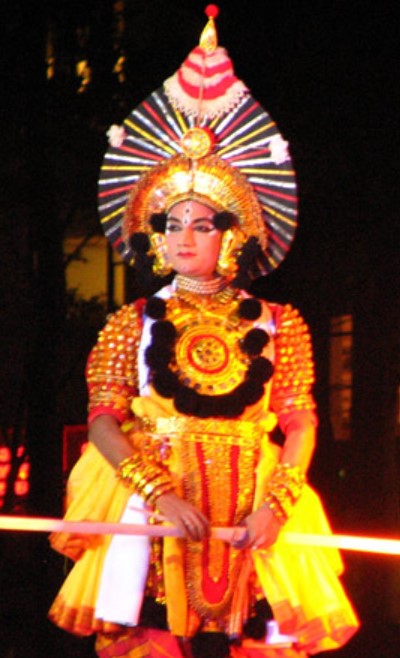
Art (Painting) and Craft
Karnataka is well known for its artistic abilities. Many art forms and crafts originated in the state also depict Karnataka’s culture and tradition.
- The famous Mysore painting emerging from Karnataka is noted for its simple style yet with intricate detailing and vibrant hues. The themes for these paintings were mainly from mythology, regality and legends that depict Karnataka’s culture and tradition.
- Badami murals are also classic examples of Karnataka paintings depicting Munis, Yakshas, Yakshinis, and Jain Tirthankaras. These paintings, cherished for their excellent craftsmanship and attractive borders are eye-catching.
- Furthermore, Hase Chitra, originating from Shimoga and Karwar districts, is a tribal art form of Karnataka.
- Karnataka also excels in carving decorative pieces and objects in wood, sandalwood, ivory and stone.
- Karnataka is also famous for its Channapatna toys, made of wood and metalwork objects, which are used for religious purposes, especially in Udupi.
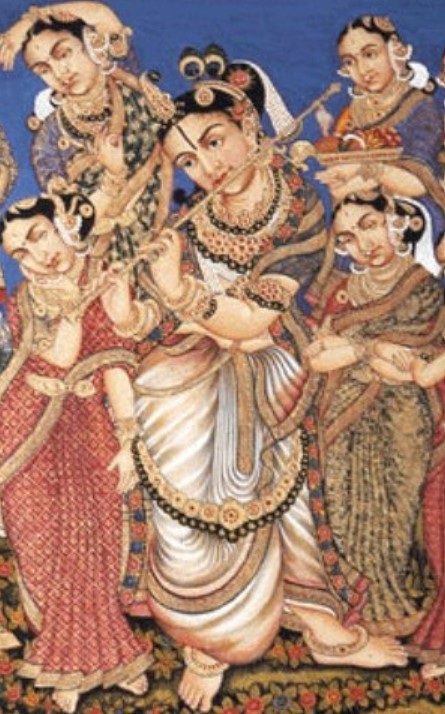
Karnataka’s culture and tradition: Languages of Karnataka
Owing to its variegated population, Karnataka is a multilingual state. However, its official language is Kannada, which is widely spoken.
- People in the coastal areas of Karnataka speak Tulu, Konkani and Beary Bashe.
- Furthermore, cities like Bangalore and Mysore have a considerable Urdu-speaking population.
Thus, the diverse population in the state directly impacts Karnataka’s rich cultural heritage.
Karnataka’s culture: Dress
Karnataka’s traditional attire differs from region to region based on the communities settled there.
- The ethnic attire of Karnataka for men is ‘Panche’, which resembles a Sarong. Men wear it below the waistline. They also wear an ‘Angavastram’ or a cloth around the shoulder.
- Men in Karnataka also wear the ‘Mysore Peta’, the traditional turban. Apart from dhoti, men in the state also wear Kurtas.
- Women in Karnataka drape themselves in sarees. The famous Mysore Silk sarees are exclusively made in Karnataka.
- Furthermore, the Kodavas have a distinct and excellent dress culture.
Thus, the state’s traditional attire depicts Karnataka’s culture and traditions.
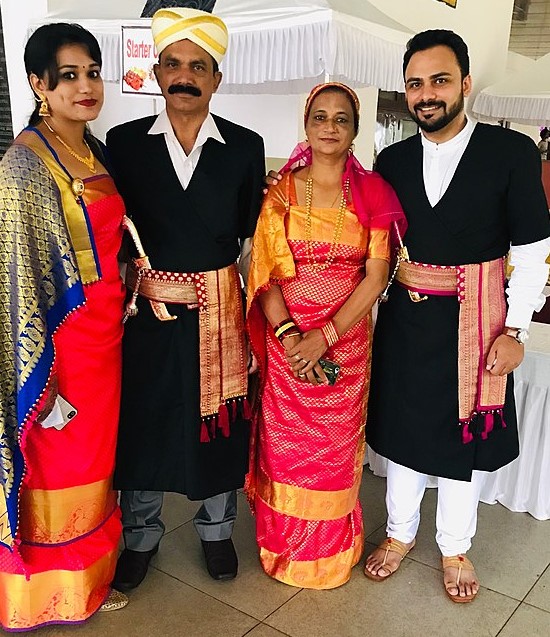
Food culture of Karnataka
Various delectable dishes have originated from Karnataka, which also speaks of the state’s tradition and culture. Food from North Karnataka treats the palate with its intense flavours. Karnataka’s cuisine also has a sweet taste.
- Karnataka is the origin of many dishes, from the renowned and delicious vegetarian Udupi cuisine to Neer Dosa, Ennegai (stuffed brinjal), Bisi Bele Bath, Vangi Bath, Akki Rotti, Ragi Rotti, Jolada Rotti (sorghum bread), etc.
- Dharwad Peda, Obbattu or Holige are some of the culinary delights from Karnataka. In fact the history of Mysore Pak originates from Karnataka.
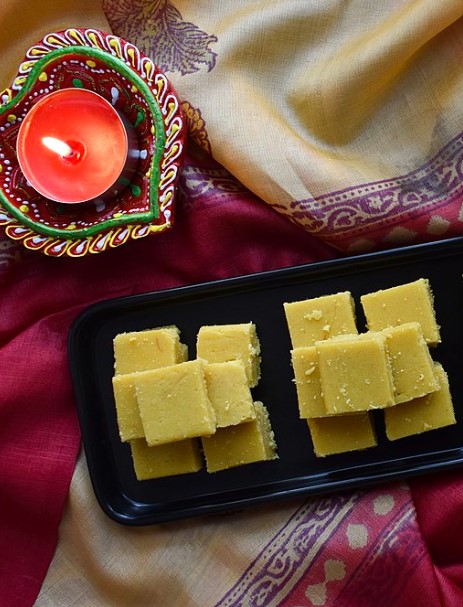
Karnataka Architecture
The different dynasties that once ruled over Karnataka have impacted the state’s architecture. Temples, cave temples, and sculptures still bear testimony to the glorious impact of the ancient dynasties, which influenced Karnataka’s culture and tradition.
- The ornamental and detailed carvings and sculptures belong to the Hoysala style of architecture.
- The magnificent, intricate carvings, made of granite, depict Vijayanagara and Dravidian architecture. The Virupaksha temple in Hampi is a fine depiction of Vijayanagara architecture.
- The pyramid-shaped temple towers in Karnataka owe their origin to the Dravidian style of architecture.
- Rock-cut temples, sandstone, and intricate carvings are also part of the Chalukyan style of architecture in Karnataka. While the cave temples in Badami are excellent examples of Chalukyan architecture, the Kedareshwara Temple in Balligavi (Belgaum) is a beautiful example of the Western Chalukya dynasty, which involved ornamental carvings and sculptures using soapstone.
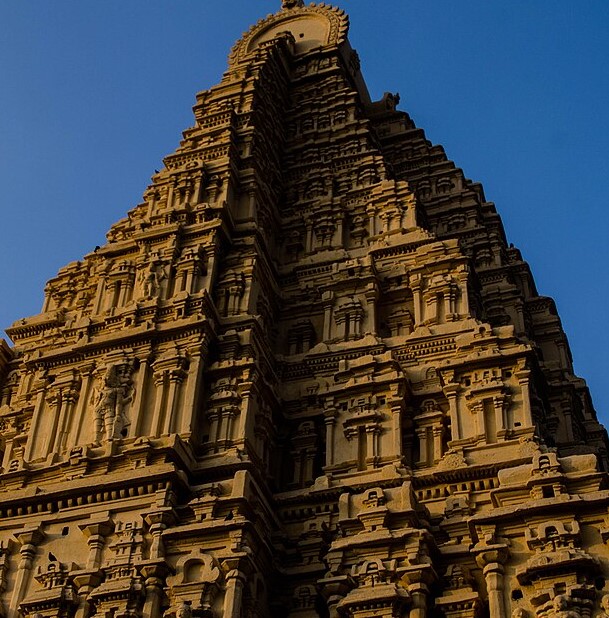
There are also traces of Islamic and colonial impact on the architecture of Karnataka with the change in the rule.
Festivals of Karnataka
The people of Karnataka celebrate many festivals all year round.
- The Ganesh Chaturthi festival is observed in Karnataka for ten days, while Dussehra is celebrated with great pomp and show in Mysore.
- Ugadi Festival marks the beginning of the Kannada New Year.
- Different festivals are also celebrated in various regions of the state. The Hampi Festival, Pattadakal Dance Festival, Kambala Festival, and buffalo racing are important festivals celebrated in the state.
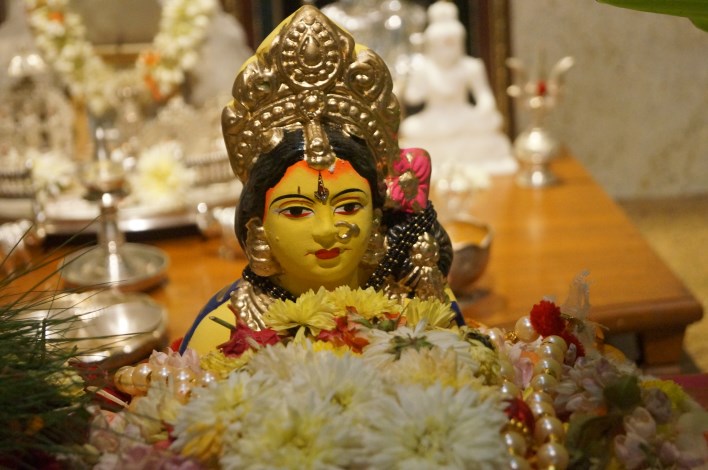
Occupation of Karnataka
The people of Karnataka engage themselves in different vocations.
- The main occupation of Karnataka’s rural community is agriculture, while people also work in the arts and crafts sector, such as wood carving, stone carving, metalworking, etc.
- Healthcare, education and tourism form a significant part of Karnataka’s economy.
- People also engage in the manufacturing industry in chemicals, textiles, and electronics. Not to forget the well established IT industry in Karnataka.
Thus, Karnataka’s culture and tradition impact all aspects of life in the state.
Also read
- Vijayanagara Utsava – Be A Part Of The Cultural Extravaganza!
- Bangalore Habba 2023: Explore The Spirit Of Bangalore In All Its Vibrancy
- Ganesha Chaturthi- Celebrate Lord Ganesha
- Makara Sankranti – A new Beginning